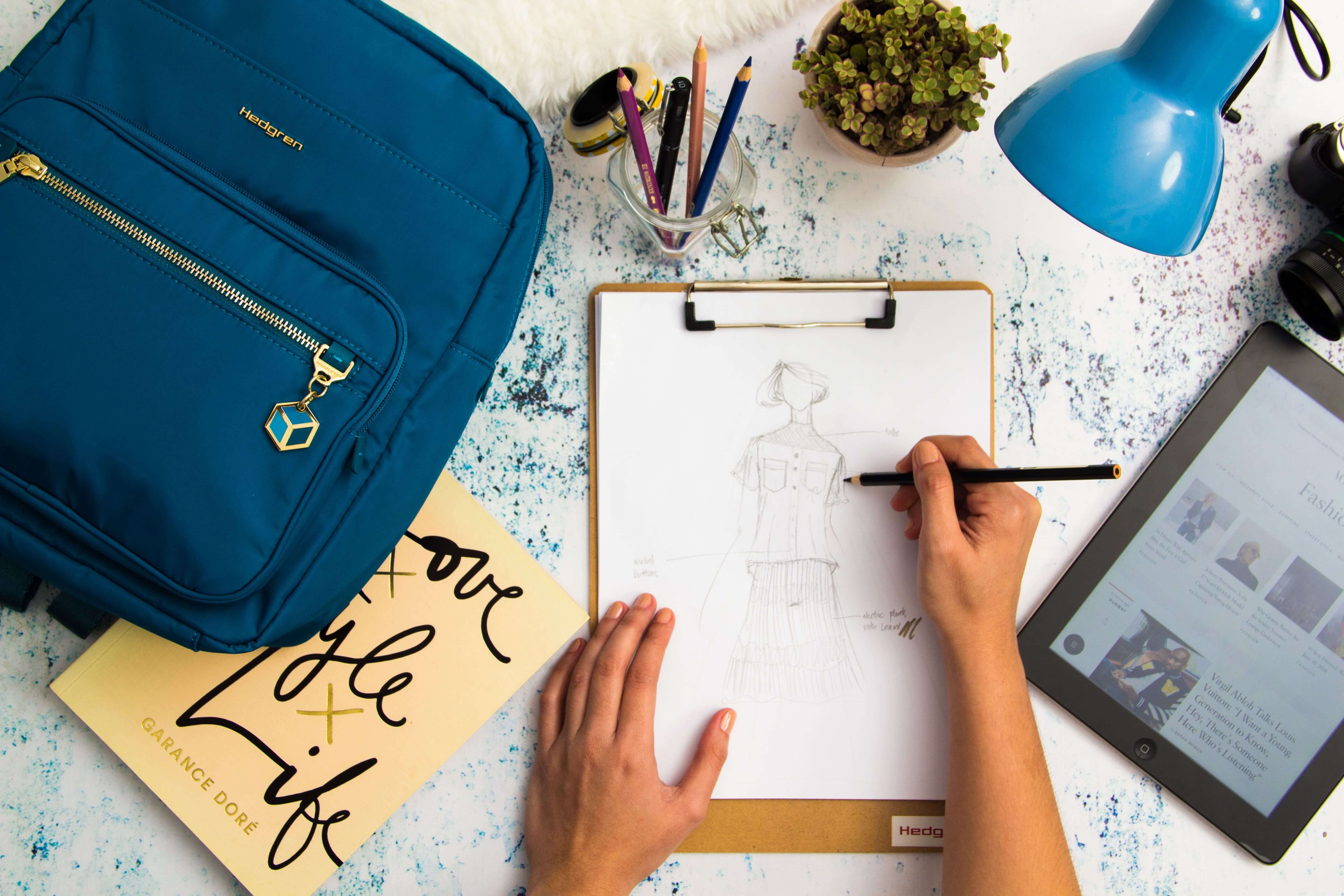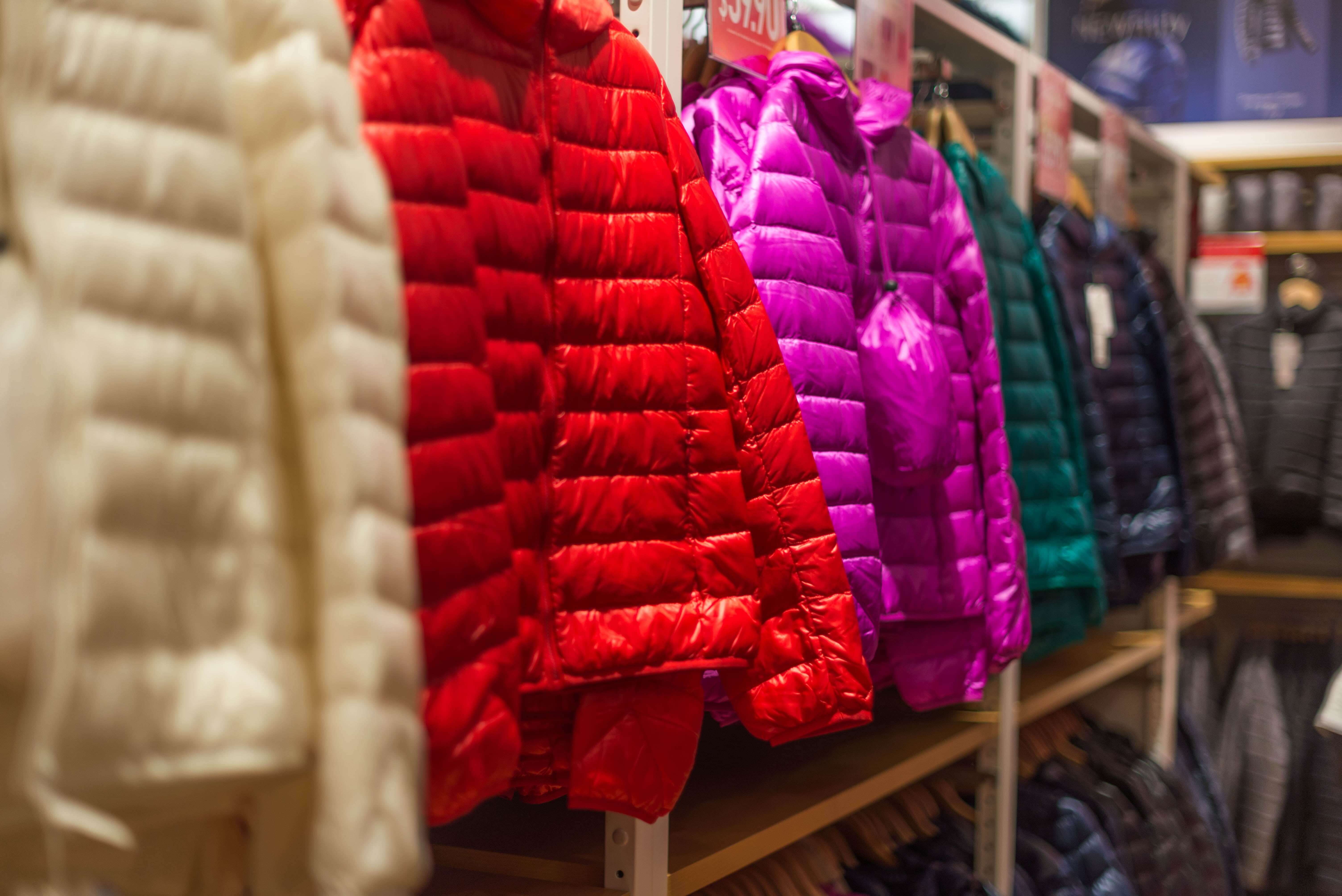A career in fashion design can be incredibly fulfilling for the fashion-forward creative, but it is also a competitive industry to break into. If you want to establish yourself as a fashion designer, you need to develop a strategy to advance your career and uniquely and effectively market yourself. While there isn’t a clear-cut path, if you are dedicated to becoming a fashion designer, you will be able to develop a successful and rewarding career.
What Does a Fashion Designer Do?
Before delving into how to become a fashion designer, it is important to develop a full understanding of what the role encompasses. The core of what a fashion designer does is, of course, designing clothing for a fashion line. This role can look different based on where they are employed and what they specialize in, but some typical universal duties involve:
- Creating design briefs that encapsulate the instructions and objectives of a project.
- Making mood boards with elements like colors, textures, and fabrics.
- Creating and delivering presentations on projects to different professionals from various sectors of the company.
- Analyzing design trends in their market and staying up-to-date on what styles are emerging in the industry.
- Maintaining awareness of costs for supplies and suppliers.
- Securing suppliers and maintaining relationships.
- Supervising the sample clothing making process.
The specifics of the position of fashion designer can vary based on where they are employed and the progress of their career. Some work for fashion houses or merchandisers, and may work in high fashion, ready-to-wear designer clothing, or commercial clothing. Typically, a fashion designer will specialize in a certain niche, such as evening wear for women or business attire for men.
As the fashion designer becomes more established in their career and company, their duties and creative control may expand. At the top of their career, they may become responsible for developing the overall creative vision and direction of a brand.
Other fashion designers choose to go the self-employment route and start their own line. This can involve a much wider business-focused skill set, especially when first launching. However, fashion designers who find success in starting their own line go on to open shops or sell through major retailers.
Fashion Designer Qualifications: Education and Training
It is increasingly competitive to establish a career in fashion design, and while it may not be a concrete requirement, a certificate or degree from an accredited institution will help set you apart from other aspiring designers. There are four-year degree programs available nationwide, as well as certificate programs that require less of a time commitment. Fashion designer qualifications include a wide skill set, and a specified program will help you hone in on the skills necessary for a successful career.
Before applying to these programs, you may need to establish some basic skills related to design, such as drawing, sewing, and patterning. Some programs require you to submit a portfolio showcasing your work and vision as a designer, while some may even require you to pass certain skill exams, like a sewing test.
Once enrolled in a program, you will develop your skills in sketching, sewing, draping, textile knowledge, and creating patterns. You will also learn how to use an industry CAD (computer-aided design) software to create your designs electronically.
Many programs will also offer courses in the history of fashion, helping you familiarize yourself with major players in the industry and understand how certain trends emerged over time.
While the creative design is the heart of a career in fashion design, it is also important to have a well-rounded understanding of the business side of the industry. Programs will offer classes in finance, marketing, and business to develop fashion designers who can look at the broad scope of the business and develop their careers and brands intelligently. Without a business understanding, a fashion designer will have a much more difficult time maintaining a sustainable career.
At the end of a degree or certificate program, many students will need to complete a senior thesis. This can be incredibly valuable for a designer just about to break into the workforce, as it can help them establish a professional portfolio with high-quality work to present to potential employers (or investors, if choosing to design your own line).
Establishing Your Career
Once you have trained and established your qualifications as a fashion designer, it is time to start taking the steps towards establishing a fulfilling and successful career. There isn’t a clear-cut path towards developing a career in fashion design, so it is important to establish a plan and implement actions that are in-line with your skills and career goals. While competition in the fashion industry is fierce, these career moves will help set you apart in a sea of people who are also trying to figure out how to become a fashion designer.
Network
If you want to succeed in fashion, networking is key. No one establishes their career completely on their own—they do it with the help of others along the way. Networking allows you to build connections with people further along in their career who may be able to open doors at a company, or peers who can serve as support as you establish yourself in the industry. You never know which connection may serve as your initial avenue into the professional fashion world, so it is important to continue to make and maintain connections. Go to alumni events or professional meetups, ask a friend who has an interesting connection to put you in contact with them, or get in touch with inspiring professionals online.
Send Cold Emails
Most people are uncomfortable with sending out cold emails, but when it comes down to it, there is no legitimate reason not to. In the best-case scenario, if you send out an email to a potential employer or business partner, it could lead to the creation of a connection that can change the trajectory of your career. The worst that could happen? They don’t respond.
As you are drafting your emails to potential employers or connections, you should keep two things in mind. First, ensure that the email is personal—don’t send the same template email to every possible connection. Mention something you admire about their business or body of work, or any thread of commonality the two of you may have. Secondly, remember to market yourself and showcase how you could be valuable to them. Show that you are not only eager to work, but also have the skills necessary to be successful in the industry.
Look for Apprenticeships or Internships
As you are in your fashion design program or right after you graduate, look for internships or apprenticeships in the industry. These opportunities are great for getting your foot in the door at a company, making connections, adding industry work experience to your resume, and possibly getting an offer for full-time work. Keep tabs on design houses, fashion magazines, and retailers to see if they offer internship programs. You may also want to reach out to smaller fashion start-ups to see if they would be interested in taking you on as an intern.
Consider Fashion Blogging
In an increasingly internet-focused world, developing your voice and brand online is a great way to establish and market yourself. A fashion blog is a valuable creative outlet that allows you to publish some of your work and get your designs out in the world, create a unique online portfolio, and potentially make connections with other inspiring industry professionals. While a fashion blog isn’t a guaranteed key into the industry, it can set you apart from other aspiring designers and help you establish your voice and marketing package.
Look into Self-Employment
This path isn’t for the faint of heart, but it is great for the aspiring fashion designer who wants to get into their own creative designs sooner rather than later—and has the resources to do so. There are a variety of e-commerce sites to sell your designs, such as Etsy, eBay, or Tictail, or you may choose to get involved with local boutiques to start. Keep in mind that this path requires a lot of patience, dedication, and business skills, but the hard work can be incredibly rewarding.
Don’t Be Too Narrow in Your Search
When looking into how to become a fashion designer, it is important to keep in mind that there isn’t one clear path to follow in order to reach your ultimate goal. It is easy to keep your scope narrow when looking for job opportunities, but keep an open mind and look into niches outside of your current radar—especially if you are having a hard time securing your first job. Beyond fashion houses, look at fashion magazines and journalism, garment technology, fashion buying, marketing, trend forecasting, or even costume design. These paths can give you a unique perspective and edge when developing your career in fashion design.




